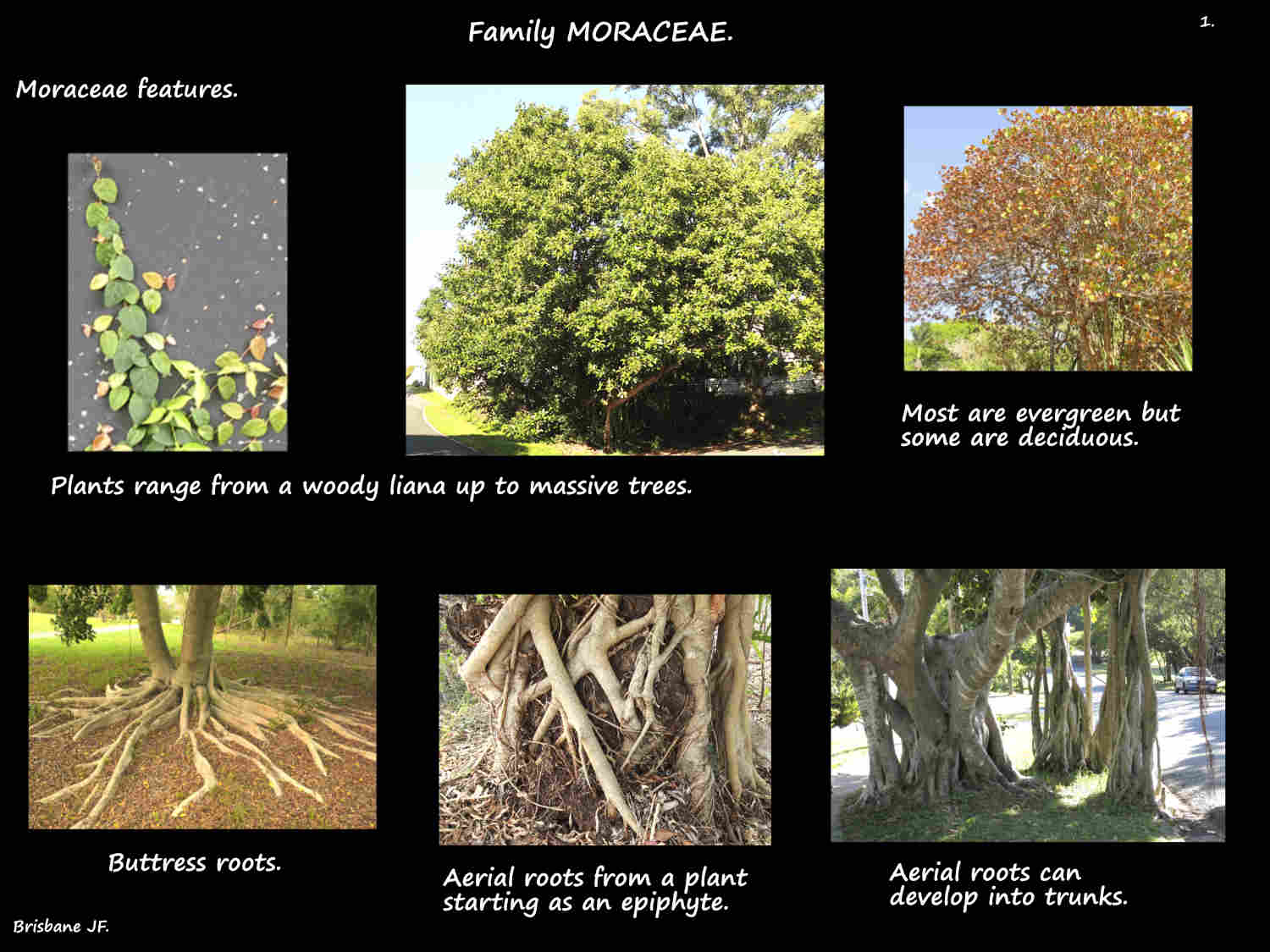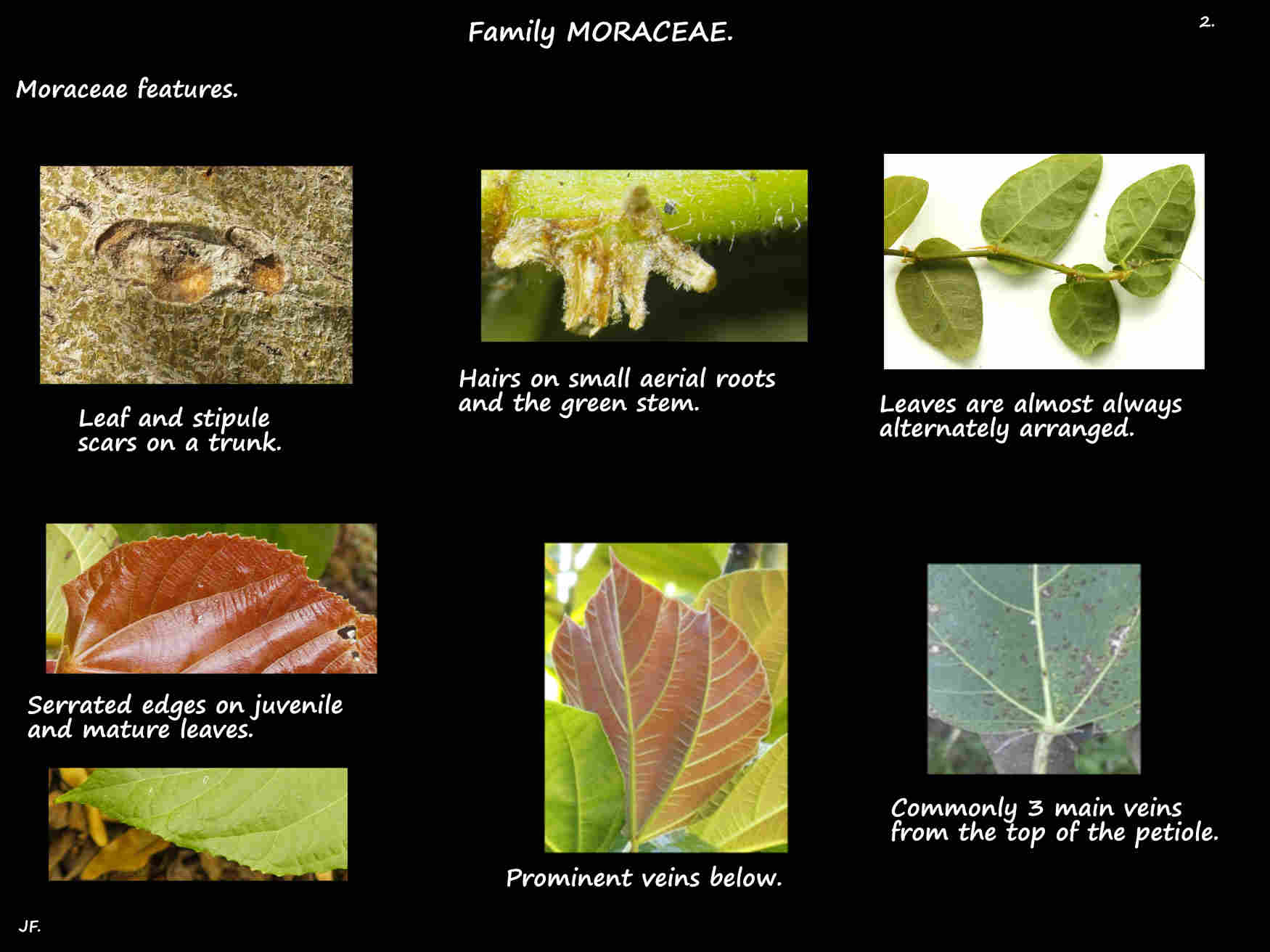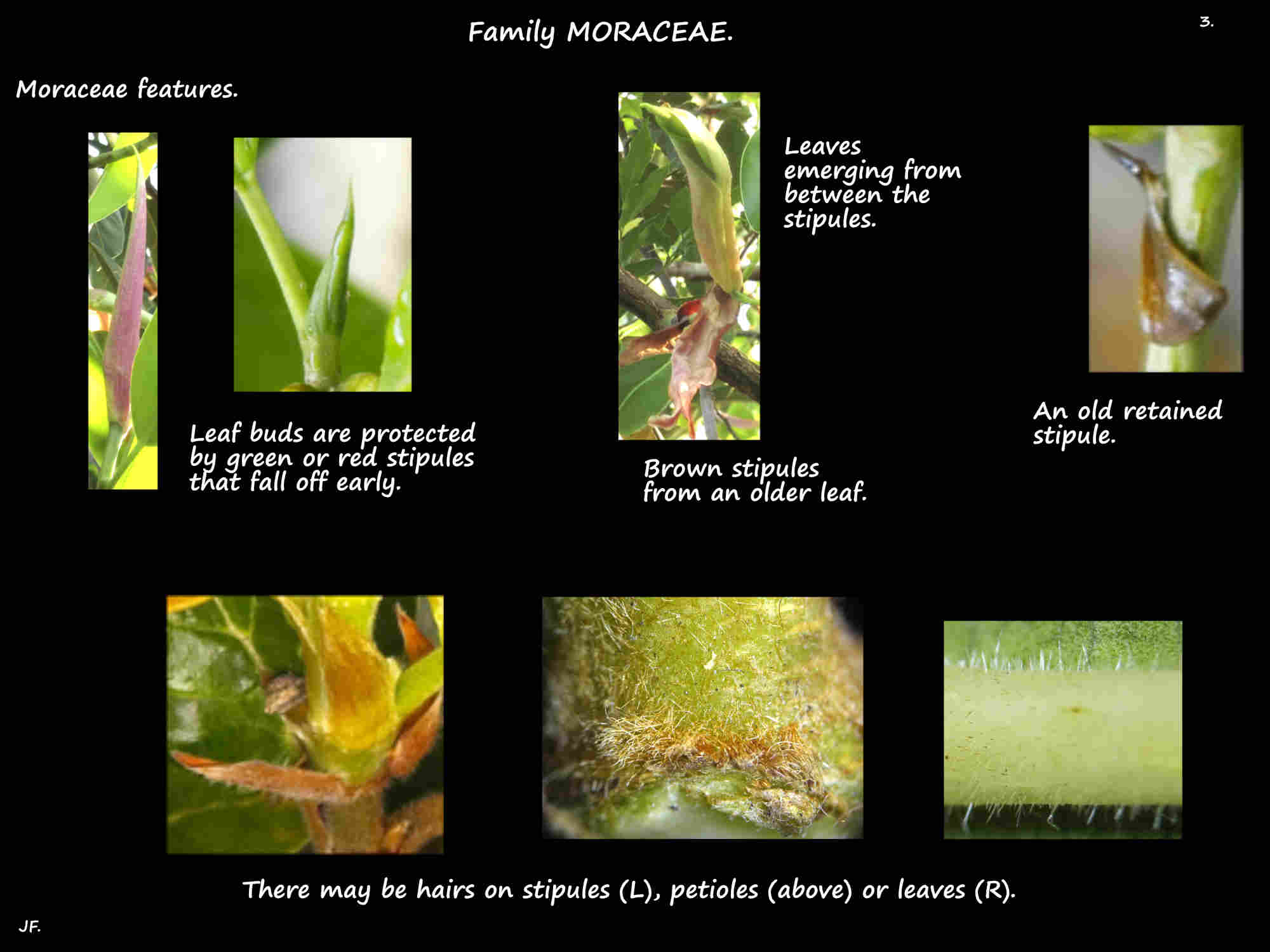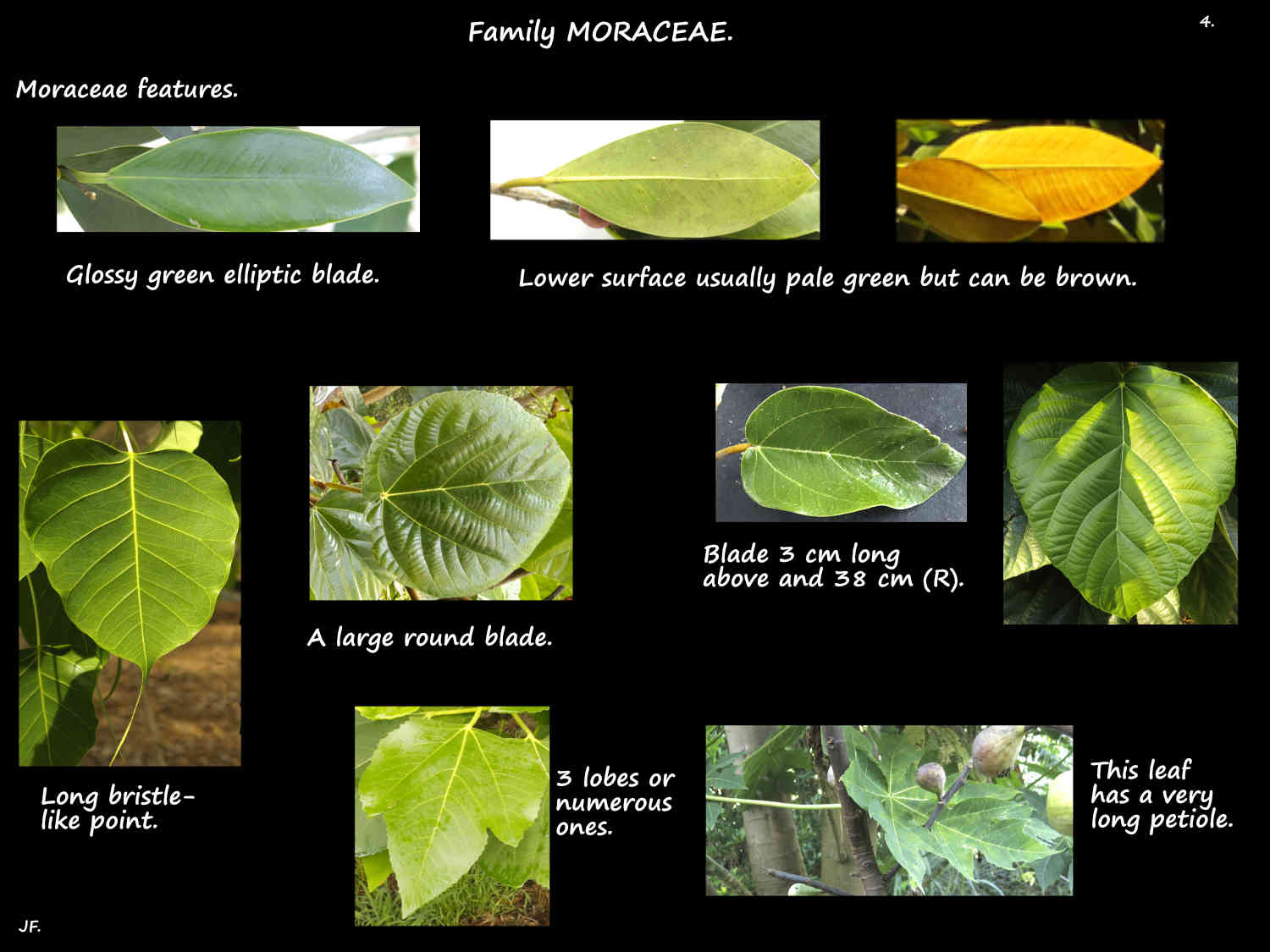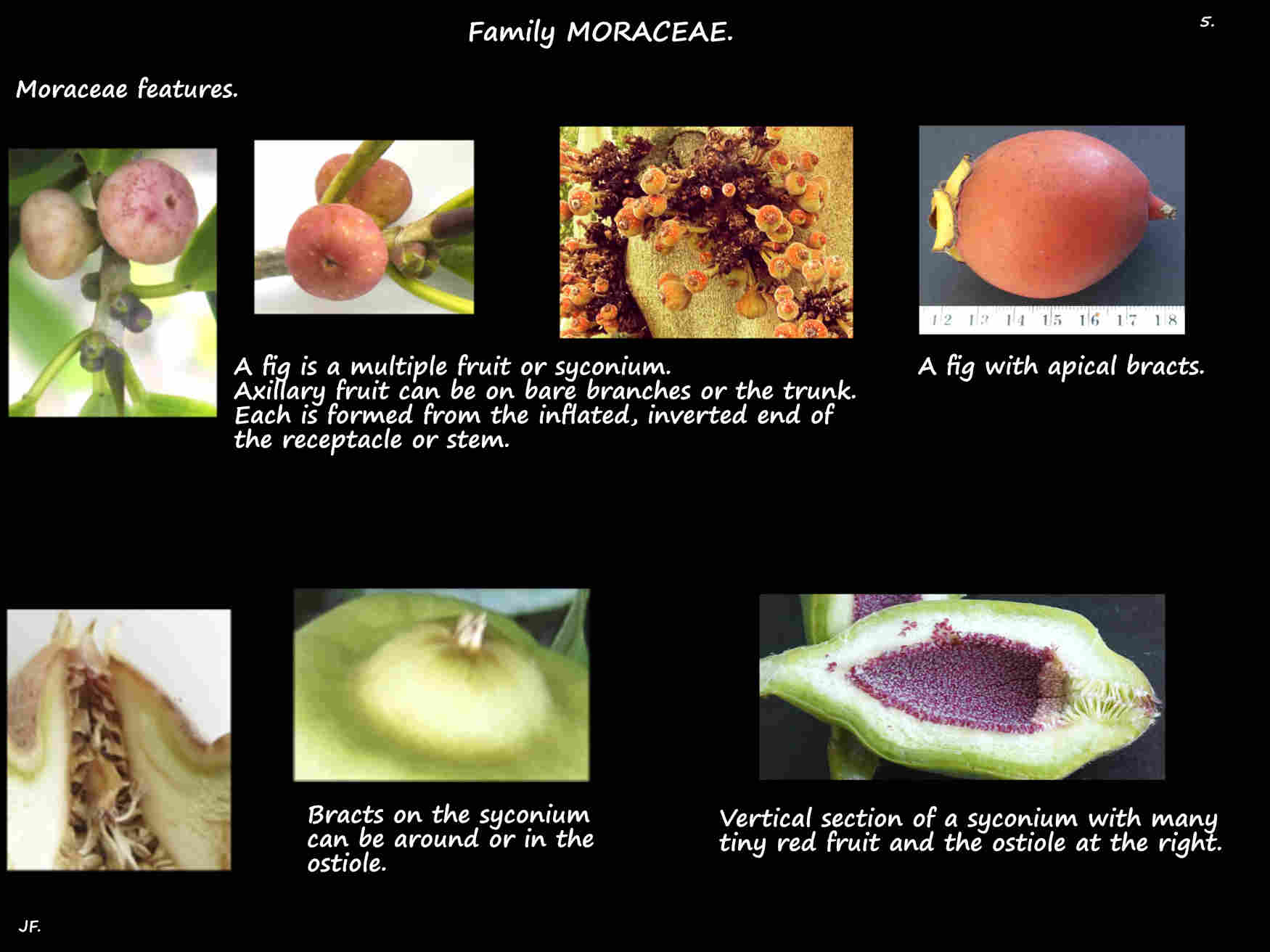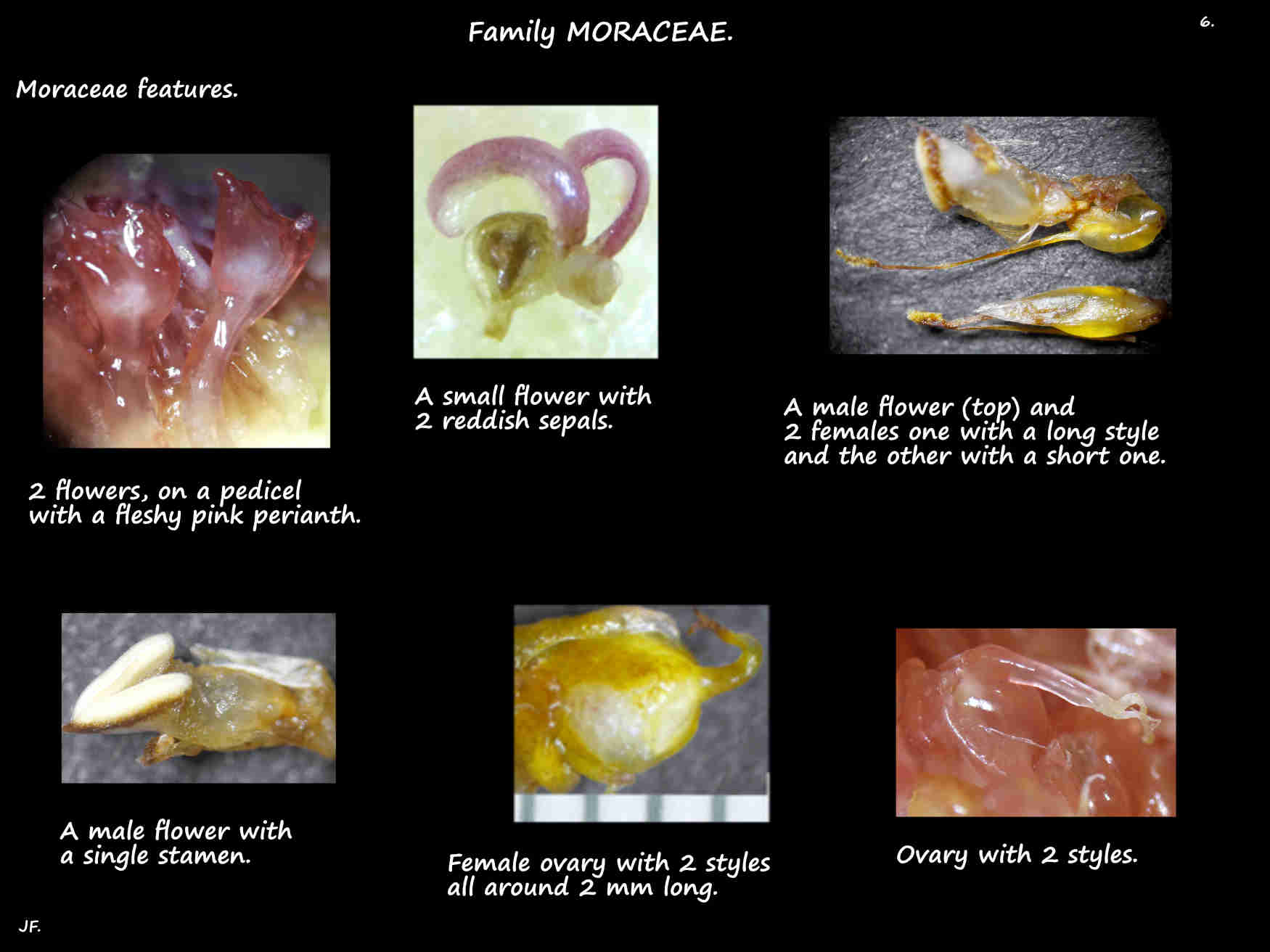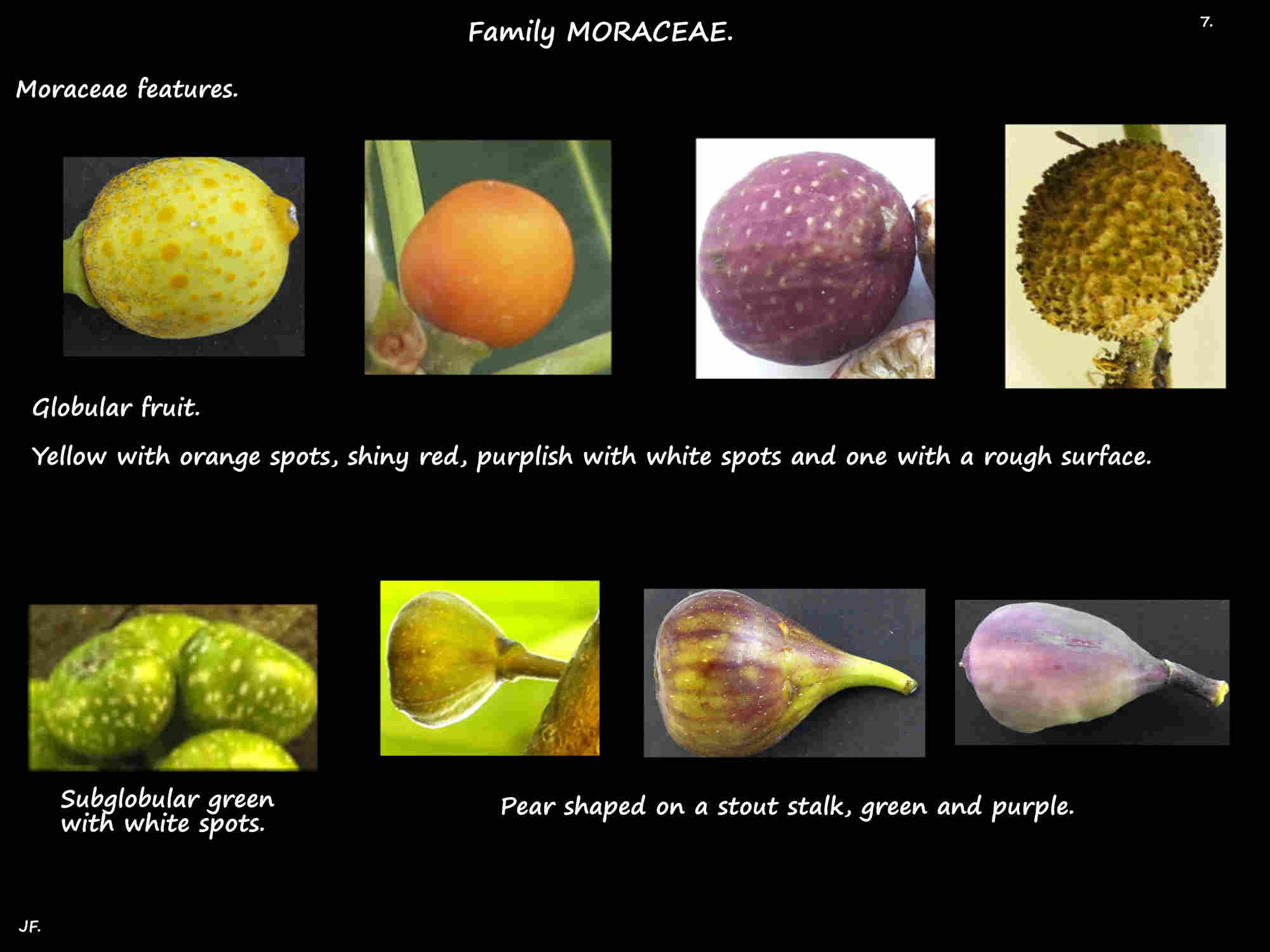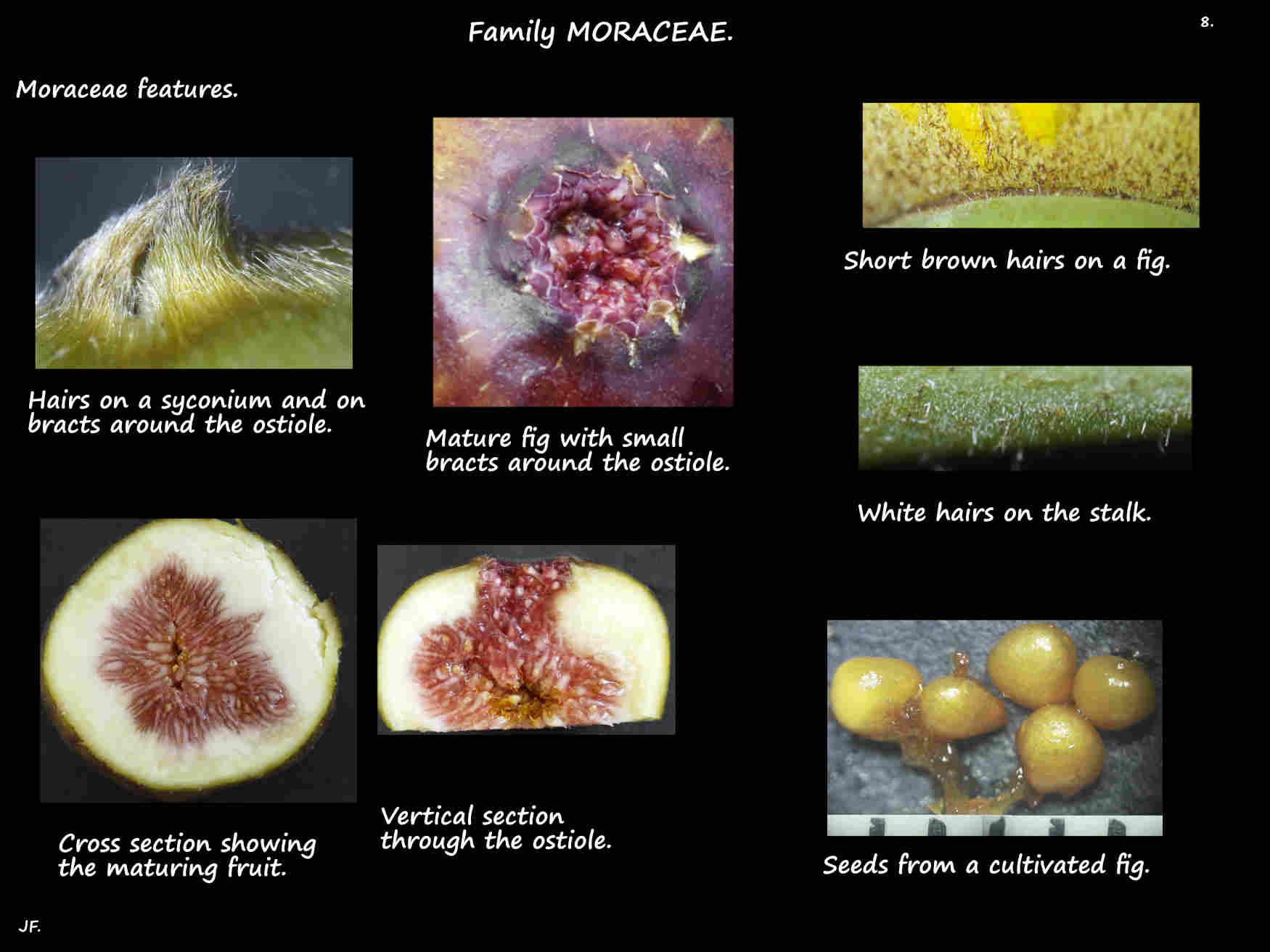Ficus.
In Family Moraceae classification of the Ficus or Fig genus is still a work in progress.
Most sources list around 800 and 850 (600 to over 1000) species and there are around 2000 synonyms.
They are from tropical and subtropical areas of the world.
Australia has 40 to 45 species with around 12 from S.E. Queensland.
All figs can be recognised by their fruit but distinguishing between the species can be difficult.
Ficus carica is cultivated for its fruit, some are seen in public spaces while others are suitable for gardens or pots.
Some better known ones here include F. elastica the Indian rubber plant, F. benjamina the Weeping fig,
F. benghalensis the Indian Banyan and Ficus obliqua the Small Leaf fig.
There are also strangler figs such as Ficus macrophylla (Moreton Bay fig) and Ficus virens.
There are a number of hybrids and cultivars including some with variegated leaves.
Mostly evergreen they are a mix of woody plants including trees, shrubs, lianas and epiphytes or part epiphytes.
Some can grow on rocks a few grow beside or in water.
Some trees are massive with up to 100 trunks developing from aerial roots and a crown covering over a hectare.
Some are estimated to be over 1000 years old.
Aerial roots can be tiny or up to metres long and large trees may have extensive buttress roots.
All parts exude latex that is mostly white to yellow but occasionally clear.
Leaves, on petioles are almost always alternate and rarely opposite.
Leaf buds are protected by 2 stipules that often fall early leaving scars.
The simple leaves are mostly entire but some are lobed.
Typically leathery they are glossy and dark green above with a paler or sometimes brown lower surface.
The surface can be smooth or rough and there may be hairs or wax secreting glands.
Inflorescences can be seen in the axils of leaves or leaf scars, on the branches or trunk and occasionally underground.
In Ficus the receptacle becomes a fleshy inverted round, urn, oblong or pear-shaped structure with a small opening or ostiole at the tip.
Called a syconium, the few to thousands of small flowers line its inner surface.
Small bracts can lie across or inside the ostiole or sometimes on the outer surface.
Each syconium can be from 0.5 to 6 cm across.
The unisexual flowers can be found on the same or different plants depending on the species.
Male flowers have (0) 2 to 6 or 7 undifferentiated perianth segments often referred to a sepals.
They may be free or partially fused.
There are 1 or 2 (3 to 7) stamens that have a straight filament and anthers that open inwards.
There are usually no remnants of female parts.
There may be gall flowers among the males often containing a fig-wasp.
Gall flowers have a large sterile ovary with a short style and a funnel-shaped stigma.
Female flowers can have the same range of sepals but often there are fewer and smaller ones or none at all.
The superior ovary has 1 pendulous ovule
The style can be anywhere on the side of the ovary from just below the top to the base.
The stigma is simple or bifid.
Each ovary in the syconium develops into a tiny fruit described as a drupe by Mabberley or an achene by Simpson.
(Both are indehiscent fruit from an ovary with a single locule with only 1 ovule.
Achenes are dry while drupes are fleshy and their seeds are enclosed in a stony layer.)
Each fig, up to 15 cm across has a few to thousands of individual fleshy fruits with a firm coat.
Mature figs can be green, yellow, dark blue or red, have spots and a smooth or rough surface sometimes with hairs.
Seeds are under 3 mm long with some as small as 0.5 mm.
J.F.
